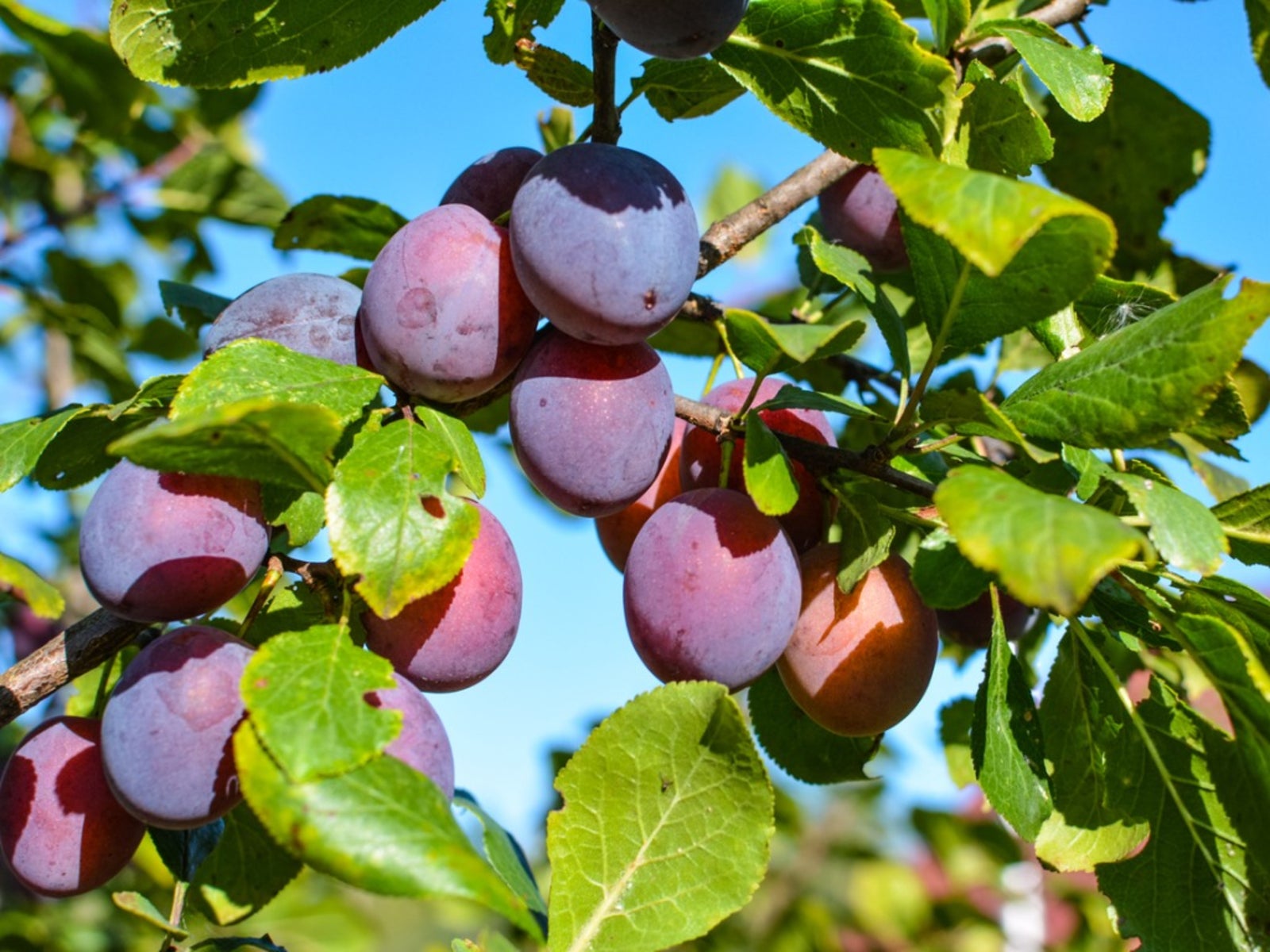Plum Tree Losing Leaves: Why Is Plum Tree Dropping Leaves

Why is my plum tree dropping leaves? If this is a question and you need a solution, be advised that there are many reasons why your plum tree is losing leaves. First, you need to try to identify the cause and then prepare a plan of attack to resolve the problem.
Preventing Leaf Drop on Plum Trees
Control methods such as preventative tactics, cultural practices, and chemical control can be used to combat the issue, sometimes singularly or in conjunction. Most problems of leaf drop on your plum trees are cultural and environmental in nature, so examine these first. Some of these may include:
- Inadequate water or nutrients
- Space or sunlight inadequacies
- Deficient soil
- Low pH
- Temperature
- Root damage from cultivation
Making the appropriate choice of tree to plant and purchasing healthy disease-resistant varieties is the key to preventing and managing any future problems. Instituting a practice of integrated pest management (IPM) is the best way to prevent or manage pest infestations. IPM consists of identifying the pest, whether insect or disease, and learning about its life cycle, foreseeing and averting problems by reducing tree stressors, and choosing the least toxic control method, which can be anything from handpicking bugs to horticultural oil and insecticidal soap applications. Good sanitation practices are another preventative measure that can be taken. Cleaning up debris, weeds, and grass from around the base of the tree can thwart overwintering insects and fungi that may be the cause of the plum tree leaves falling off.
Why is Plum Tree Dropping Leaves?
Listed below are the most common reasons for a plum losing leaves: Nutrient deficiencies - Nutrient deficiencies such as boron, iron, manganese, sulfur, or nitrogen, may contribute to the plum tree leaves falling off. Stone fruit trees need nitrogen, potassium, and phosphorus. Consult a nursery or extension office for information on the correct chemical fertilizer and timing for application, or organic fertilizer (such as composted manure and yard waste) can be used. Foliar application of seaweed extract, compost tea, or fish emulsion is also great. Improper watering practices - Watering properly is important to prevent leaf drop. Newly planted trees should be watered 6-8 inches (15-20 cm.) down in the soil about two to three times a week through the fall and keep organic mulch around the tree (6 inches (15 cm.) away from the trunk) to aid in water retention. Phototoxicity - Phototoxicity may also result in a plum tree losing leaves. Phototoxicity often happens when summer oil sprays, like neem oil or insecticidal soaps, are applied when the tree is under stress from dry conditions or when temps are over 80 F. (27 C.). Diseases - Bacterial leaf spot or shot hole disease may also afflict your plum tree and cause leaf drop, sometimes severely. Wet weather makes both these diseases worse. A winter application of a copper fungicide can prevent these diseases, but can't be used during the growing season due to phototoxicity. Use Agri-Mycin 17 Streptomycin now and next year before the disease hits. A number of fungal diseases may also contribute to lost leaves on a plum tree, and these include Armillaria root and crown rot, Phytophthora, and Verticillium wilt. Foliar diseases, such as plum leaf spot, may be the culprit too. Sanitation, by raking and disposing of infected leaves should be implemented and a fungicide may be applied after the petals drop. Post-harvest, a mixture of copper sulfate and lime can be applied. Pests - Spider mites or an aphid infestation may also result in plum tree leaf drop. Also, the honeydew excreted by aphids leads to sooty mold. A strong spray of water can reduce the aphid population and a dormant oil spray at bud swell can be applied.
Gardening tips, videos, info and more delivered right to your inbox!
Sign up for the Gardening Know How newsletter today and receive a free copy of our e-book "How to Grow Delicious Tomatoes".

Amy Grant has been gardening for 30 years and writing for 15. A professional chef and caterer, Amy's area of expertise is culinary gardening.
-
 4 Superfast Composting Methods: Turn Waste Into Garden Gold In 30 Days Or Less
4 Superfast Composting Methods: Turn Waste Into Garden Gold In 30 Days Or LessTry the fastest composting methods to turbocharge your pile and transform kitchen scraps and garden waste into finished compost in just a few weeks.
By Mary Ellen Ellis
-
 Best Spider Plant Soil – Complete Soil Guide And Expert Tips For Keeping Plants Happy
Best Spider Plant Soil – Complete Soil Guide And Expert Tips For Keeping Plants HappySpider plants are fun and easy plants to grow, but what is the best soil for a spider plant? Selecting the right soil is important so they can thrive.
By Bonnie L. Grant